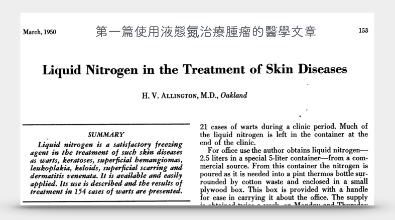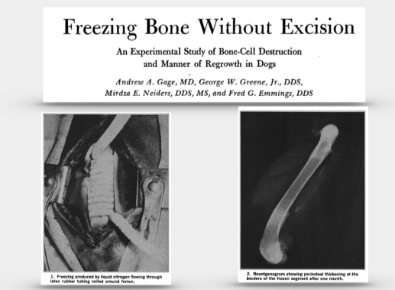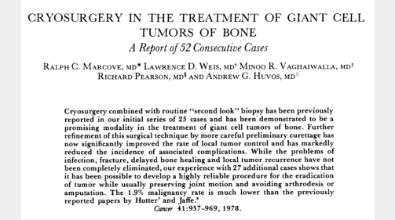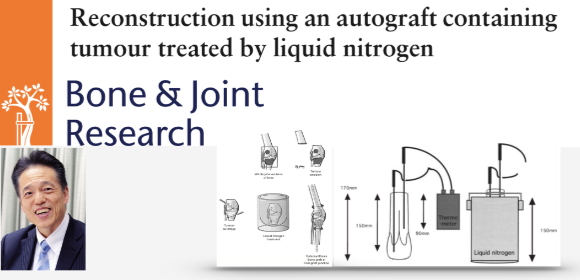However, why is liquid nitrogen generally used?
Let’s first take a look at the history of cryotherapy
In the early development stages of cryotherapy (1845 A.D.), James Arnott, a British doctor, used saline and ice (which can lower the temperature to minus 24 degrees Celsius) to cryo-treat tumors such as breast and skin cancer. Yet, at that time, it only provided pain improvement and bleeding reduction, and it was not able to treat tumors.
Until 1877, Louis Paul Cailletet, a French physicist, invented the method to liquidise oxygen and carbon dioxide under high temperatures. Such an invention was really important to both physics and medicine.
Twenty-two years later, in 1899, Dr. Campbell White in New York successfully treated cancer with liquefied gas, and he once said something rather pompous:
Dr. Campbell White, 1877
I can truly say today that I believe that epithelioma, treated early in its existence by liquid air, will always be cured”
In 1850, Dr. Allington at the University of California, Berkeley began to use liquid nitrogen to treat skin tumors. However, the approach he used had limited effectiveness since his use of cotton swabs to attach liquid nitrogen had poor conductivity.

By 1860, Dr. Gafe, the oral surgeon in buffalo who we had just mentioned, was accidentally found the nearby normal bones frozen to death while he used liquid nitrogen to treat oral tumors. What surprised us more was that those bones started recovery after a few months! So, he conducted an animal experiment using his dog to prove his findings, and the study ended up published in the famous journal- JAMA.

In the 1960s, Dr. Marcove at the Sloan-Kettering Hospital in New York began experimenting with liquid nitrogen to treat bone tumors. At first, he tried to treat patients with bone metastasis and benign giant cell tumor, and he found good results. Gradually, he started using liquid nitrogen to treat osteosarcoma.
At the time, Dr. Marcove used the 'direct pouring method', which, as the name suggests, was pouring liquid nitrogen directly into the bone to kill the tumors, just like pouring the boiling water. The effectiveness is quite good, but the orthopedic surgeon must be quite careful to protect nearby skins before freezing and have considerable experience! Therefore, although the effectiveness of this tumor treatment is quite good, complications would easily occur. Hence, it’s not popular in the orthopedic community.

By 2000, Dr. Tsuchiya, an orthopedic professor at Kanazawa University in Japan, invented recycle frozen autograft.

Recycle frozen autograft is re-transplant the removed malignant bone tumor into the patient after removing the tumor, soaking it in liquid nitrogen, and eradicating all the tumors. Professor Tsuchiya also presented the successful results in the ISOLS Conference (International Society of Limb Salvage, the world's most important osteosarcoma conference) held in Korea in 2005.
Therefore, in 2007, my teacher Dr. WM Chen, the Vice President, went to Japan to exchange experiences. We brought in vitro high-dose radiation therapy technology to Japan and brought the recycle frozen autograft technology back to Taiwan. This experience exchange also built great friendships between the Therapeutical and Research Center of Musculoskeletal Tumor in Taipei Veterans General Hospital and the "plastic surgery" department in Kanazawa University. good friendship! (Note: Orthopedics in Taiwan are called plastic surgery in Japan).


